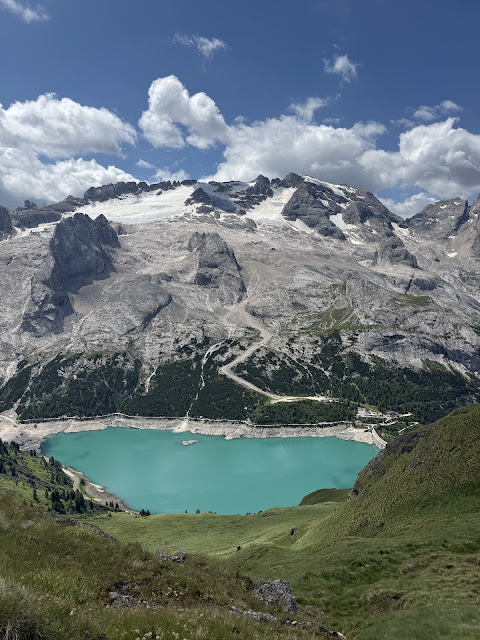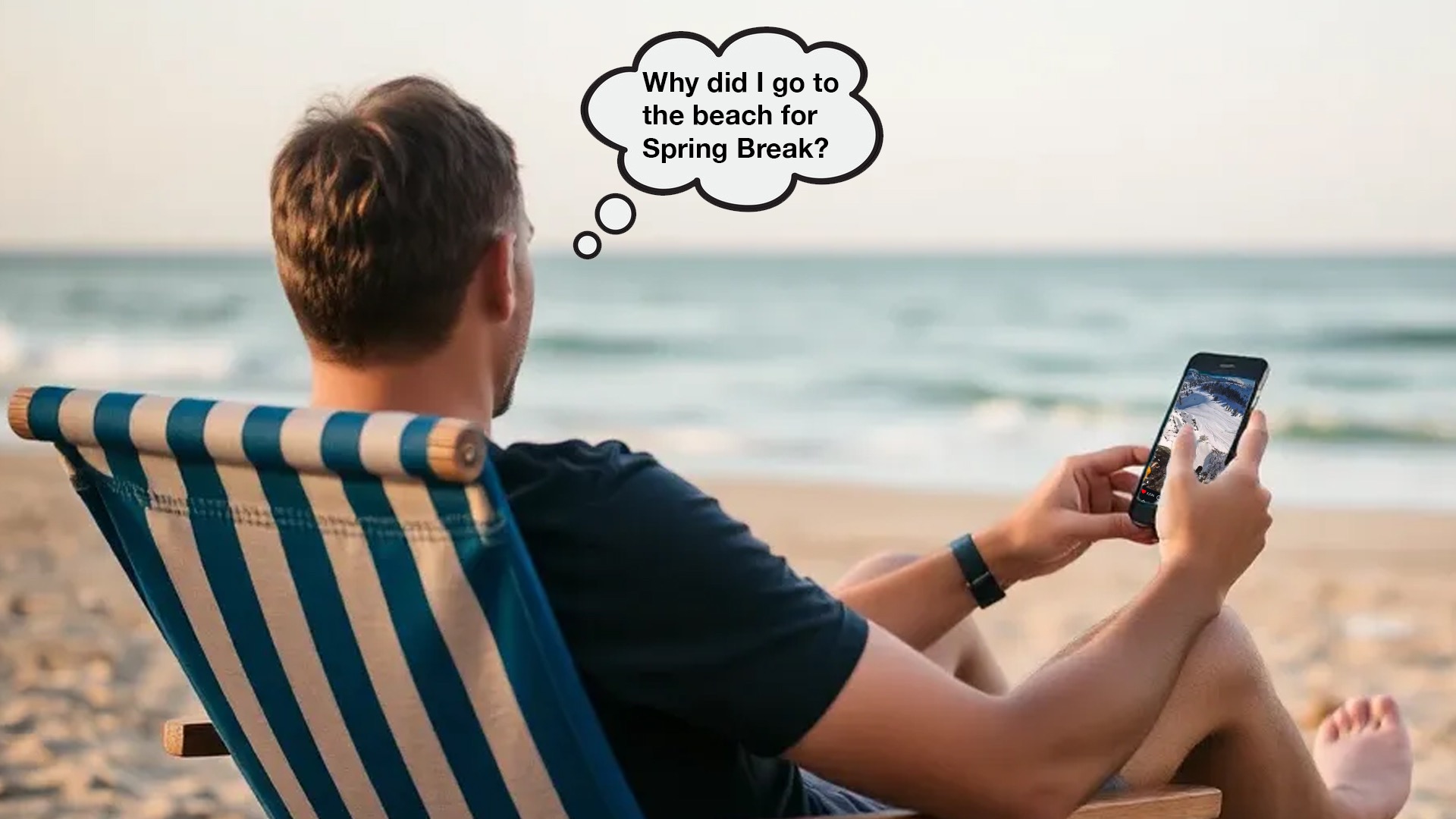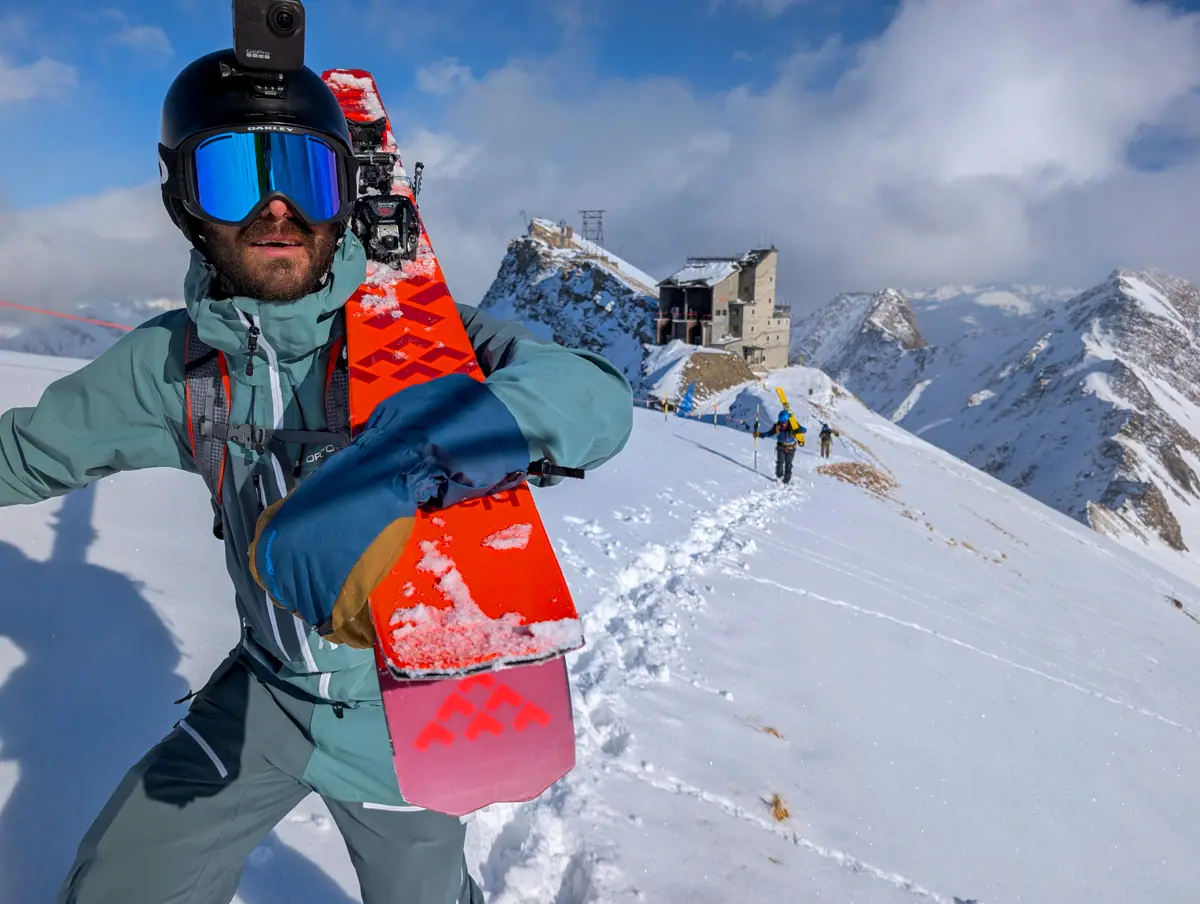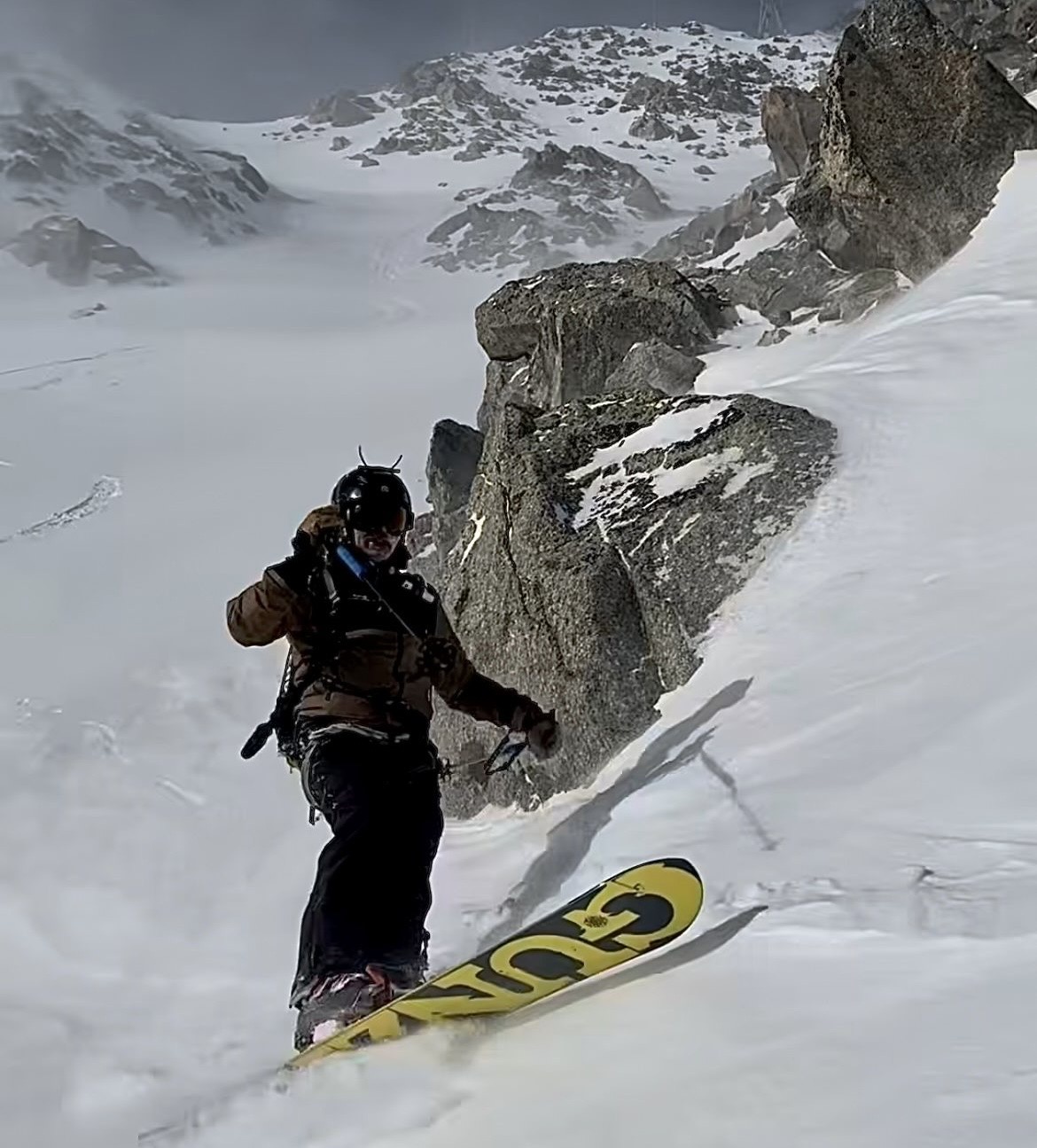 |
| Patrick Joly, better known as "Monoman" by the Chamonix community, was known for his eccentric character and hard-charging ski style, often seen at the Monte Bianco Skyway in nearby Italy with antennas on his head and a cape on his back. | Photo: Papy Millet |
The Monte Bianco Skyway is an engineering marvel. The rotating cable car, offering 360-degree panoramic views as it soars from the quaint Italian ski village of Courmayeur, accesses the high glaciers of the Mont Blanc Massif at over 3,400 meters (11,300 feet), just on the other side of the tunnel running from Chamonix. It gives direct access to some of the most dangerous ski terrain in the world. It's a classy, awe-inspiring ride into the alpine wilderness surrounding Western Europe's highest peak. For Patrick Joly—better known as "Monoman" by the Chamonix and Courmayeur communities—it was a gateway to the place where he felt most alive.
On February 14, Monoman was skiing alone beneath the Colle del Gigante when an avalanche roared down the Serac Line, catching him from behind. Buried under more than a meter of snow, he remained trapped for 45 minutes before rescue teams arrived. He was pulled from the debris, barely clinging to life, and airlifted to Parini Hospital in Aosta. Two days later, he succumbed to his injuries.
He was 65.
The Legend of Monoman
Monoman was no ordinary skier. A retired traveling salesman from Paris, he had moved to Chamonix 12 years ago and thrown himself into a life of full-throttle skiing. His love for monoskiing—a style that once flourished in the 1980s but had since faded—became his calling card, but it was his unmistakable appearance that truly set him apart. With a cape billowing behind him as he carved down the slopes, he looked like a skiing superhero, the fabric whipping in the wind as if fueling his speed and flair. Affixed to his helmet was a pair of antennas—quirky, inexplicable, yet entirely fitting for a man who seemed to exist on his own wavelength, tuned into a frequency of pure joy and adrenaline. Whether they were for style, superstition, or a silent joke, no one knew for sure, but together, the cape and antennas became as much a part of his legend as his relentless pursuit of the next run.
“He was out there, skiing all the time, making the most of it,” Ross Hewitt said, a longtime Chamonix guide. It wasn’t just that he skied every day—it was how he skied. In 2019, Monoman set the record for most runs completed in a single day on the Monte Bianco Skyway: 18 laps, with each run at least 1,200 meters (4,000 feet) long. A staggering feat, considering the punishing terrain and the time it takes to cycle back up.
“He did it in a year when the exit was rocky, slow,” Hewitt recalled. “But Monoman just stayed there all day long, when everyone else said, ‘It’s getting hot. Time to go home.’”
Monoman was a character, eccentric but deeply respected in Chamonix. If the lift was delayed or the weather turned bad, he’d find a piano and start playing. He was a professional musician, often performing in bars and hotels for après-ski. Sometimes he would even play in the Monte Bianco Skyway station between runs, fingers dancing across the keys while his monoski leaned against the wall beside him, snow trickling onto the mid-station's tile floors.
“He loved music, loved life,” Papy Millet said, another long-time Skyway local and friend of the late Chamonix freeride hero Tof Henry, as well as one of Monoman’s closest ski partners. “He was always enjoying himself.”
The Avalanche
February 14 had started like any other day. Monoman and Millet were skiing together in the morning, lapping Skyway as they had for years. But by midday, the sun was baking the slopes. Millet called it—he knew better than to keep skiing once the snow softened. But Monoman, as always, stayed out.
“He loved skiing alone,” Millet said.
The avalanche struck around 2:30 p.m. from above the Serac Line, a notorious but beloved freeride route beneath Colle del Gigante. It was big—likely a D3 on the American avalanche scale—powerful enough to bury a car, to snap trees. It was likely triggered naturally as a result of wind-transported snow from heavy winds that were blowing at over 100 kilometers that day, loading the avalanche-prone slope until it reached its breaking point. People on the tramcar overhead saw it unfold. Someone filmed it. The footage is gut-wrenching: a tidal wave of white surging down the face, swallowing Monoman before he could react.
He was buried for 45 minutes.
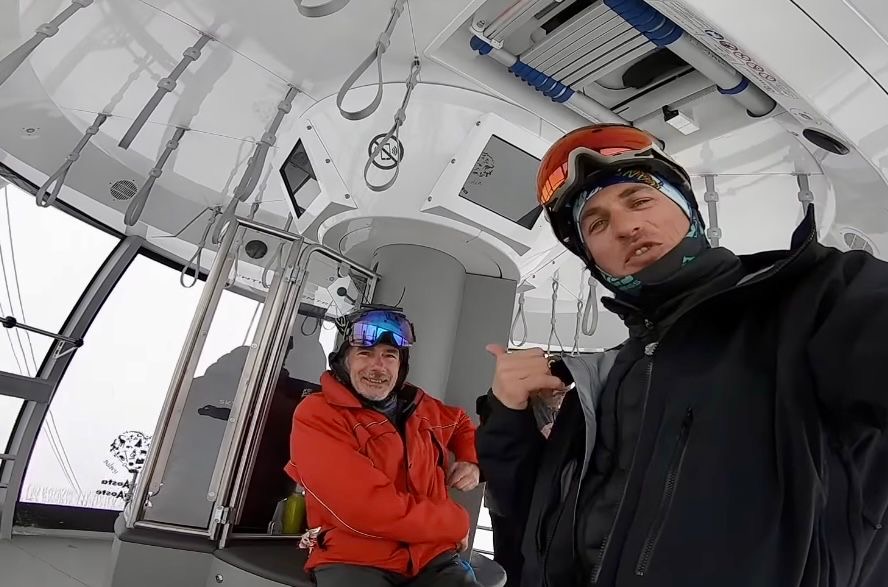 |
| Millet and Monoman on the Monte Bianco Skyway cable car. | Photo: Papy Millet |
Most avalanche victims don’t survive past 15.
Rescue teams arrived by helicopter. His avalanche transceiver was working. They dug him out, unconscious but with a pulse. He was flown to the hospital in Aosta, where doctors fought to save him. But the damage was too severe.
On the morning of February 16, Monoman was gone.
“The Game”
Monoman had always embraced risk. Chamonix is a place where skiers speak of avalanches not as rare disasters, but as an ever-present reality. Here, the mountains don’t forgive mistakes. Monoman knew this.
“He played the game,” Millet said.
The “game” was an unspoken challenge among the hard-charging locals: how far could you push, how close could you dance to the edge before the mountains decided otherwise?
“I rescued Monoman many times over the years,” Millet admitted. “From crevasses, from glaciers, from bad situations.” But Monoman never slowed down. He was 65, still skiing faster than most men half his age. He didn’t back off when conditions deteriorated. He didn’t call it a day when the heat made the slopes unstable. And on that February afternoon, when even his longtime partner had decided it was too dangerous, he dropped in one more time.
Skiing in Chamonix is a lifelong test of balance—not just on the snow, but between ambition and restraint, passion and pragmatism. The mountains here demand skill, but more than that, they require humility. Yes, many have lost their lives pushing too hard, ignoring warning signs, or simply falling victim to the mountain’s unpredictable nature. But survival isn’t just luck; it’s about knowing when to go and when to walk away. Hewitt, who has been skiing here for nearly 30 years, has seen both sides of that equation. He’s watched friends disappear, but he’s also managed to keep himself in the game, season after season. Experience teaches patience, and patience keeps you alive. “Every five years, something like this happens,” Hewitt said. “It’s the reality of the place. It’s really good skiing. But also, when it goes wrong—it goes wrong.”
Monoman lived for skiing and he pushed its limits—sometimes past where others would. He was a talented man who knew the risks and understood the mountains. He, like many other locals, was well aware that Chamonix is a place where the line between adventure and consequence is razor-thin. Yet for those who make it their home, that’s part of the pull.
One Last Song
I met Patrick Joly—Monoman—for the first time this season at the Skyway. He immediately stuck out to me—a cool-headed Frenchman with long flowing gray hair skiing in sunglasses with antennas on his helmet—monoski and all. I immediately knew he was somebody. The last time I saw Monoman, however, he wasn’t skiing—he was playing the piano, singing and smiling big, completely lost in the music. I didn't even know that he played the piano. It really brightened my day. I wouldn't see him again. The next day was the avalanche.
I still see him there—fingers sliding across the keys, carefree as ever. Just like when I witnessed him on the mountain, cape trailing behind him, carving through the snow. He was impossible to miss and even harder to forget. Monoman skied harder and longer than most, driven by something beyond reason, beyond caution. Sure, I didn’t know him that well—but I saw him. And those who did know him will remember not just how he skied, but how he lived—fully, and without hesitation. The Chamonix community grieves the loss of an iconic character, yet I'm also quite sure that those who loved and cared for him will also always remember him with a little bit of a smile.
The mountain may have taken Monoman but it does not keep him. He is in the stories, in the wind at the summit, and in the tracks that vanish with the next snowfall under the Skyway's cables.
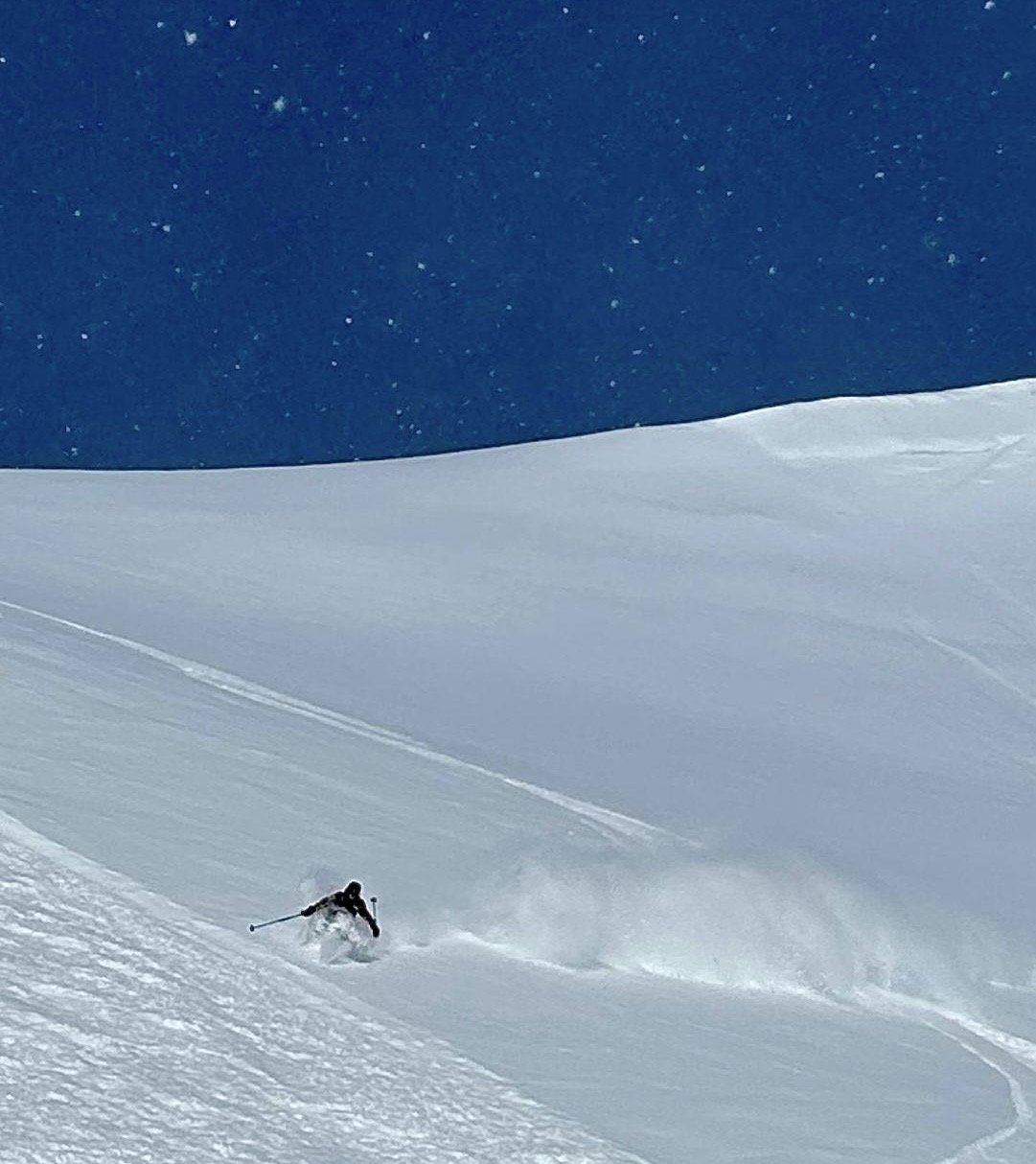 |
| Monoman in his element, charging down the slopes of the Skyway. | Photo: Papy Millet |
